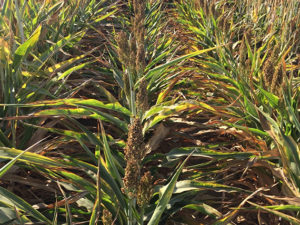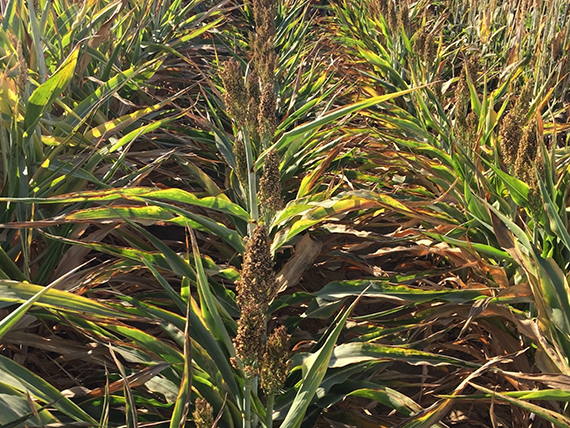
The sorghum “stay-green” variety BTx642, grown in Central Valley at temperatures around 100 degrees for 65 days without water. (Jeffrey Dahlberg, UC ANR Agricultural Research and Extension Center)
Sorghum bicolor (L.) Moench is an African grass that adroitly handles droughts, floods and poor soils. While sorghum is drought-tolerant, the crop’s precise response is dependent on when exactly water becomes a limiting factor – before or after flowering. Reported in PNAS the week of December 2, 2019, is the first paper that describes sorghum’s response to drought, from a large-scale field experiment led by a multi-institutional consortium to uncover the mechanisms behind sorghum’s capacity to produce high yields despite drought conditions. Read the full highlight on the JGI website.


